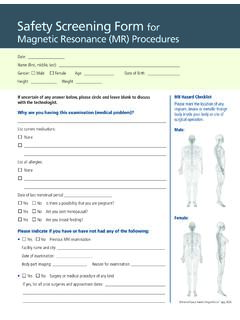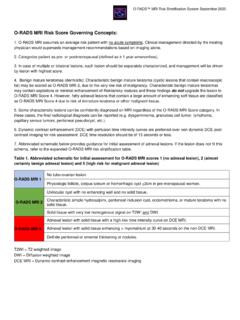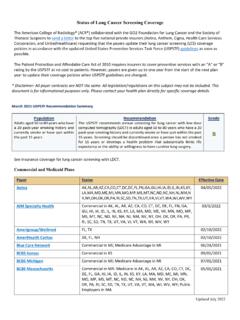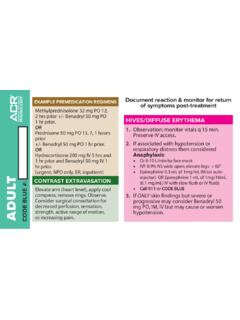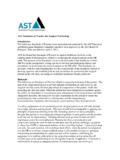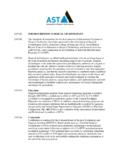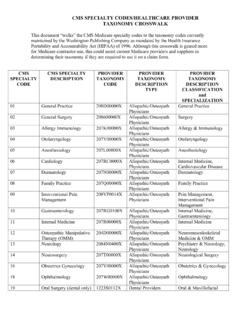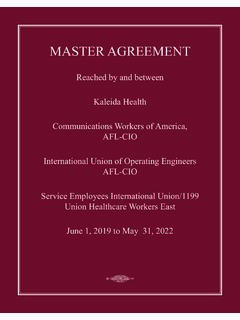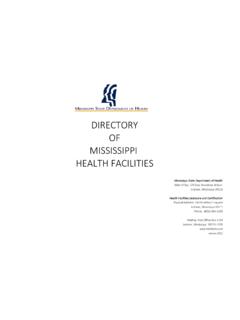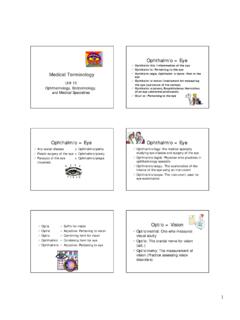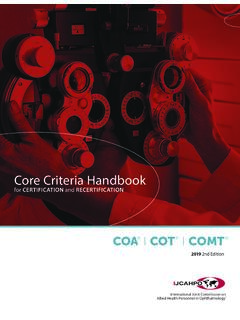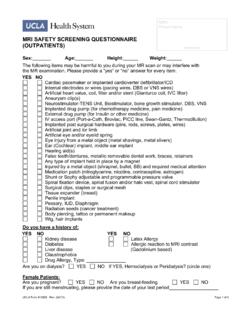Transcription of ACR Manual on MR Safety
1 2020. ACR Manual on MR. Safety ACR COMMITTEE ON MR Safety . AMERICAN COLLEGE OF RADIOLOGY | 1891 Preston White Drive, Reston, VA 20191. 0. ACR Manual on MR Safety Version 2020. ACR Committee on MR Safety 1. CONTENTS. ACKNOWLEDGMENTS .. 3. 4. Revisions .. 5. Introduction .. 6. Establishing, Implementing, and Maintaining Current MR Safety Policies and Procedures .. 7. MR 7. MR Screening .. 9. 14. Full stop/Final check .. 14. Special Patient Population Considerations .. 15. MRI Contrast Agents .. 18. MRI Patient Risk Assessment.
2 18. Physiologic Monitoring During MR Studies .. 18. Implants, Devices, and Objects .. 19. MR Environment .. 22. Static Magnetic Field-Related Issues .. 29. Time-Varying Gradient Magnetic Field Related Issues .. 31. Time-Varying RF Magnetic Field Related Issues .. 32. References .. 37. Appendix 1: Personnel Definitions and Organizational Structure .. 43. Appendix 2: Magnetic Resonance Facility Safety Design Guidelines .. 45. Appendix 3: MAgnetic Resonance Facility Emergency Preparedness Guidelines.
3 53. 2. ACKNOWLEDGMENTS. Emanuel Kanal, MD, FACR University of Pittsburgh Medical Center, Pittsburgh Todd Greenberg, MD, CSCS*D - Chair Private Practice, Seattle Michael N. Hoff, PhD University of Washington, Seattle Tobias B. Gilk RAD-Planning, Kansas City Edward Jackson, PhD, FACR University of Wisconsin, Madison Alexander M. McKinney, IV, MD University of Minnesota Medical Center, Minneapolis Joseph Och, MS Geisinger, Danville Ivan Pedrosa, MD, PhD University of Texas Southwestern Medical Center, Dallas Tina Rampulla, RT WellSpan Health York Hospital, York Scott B.
4 Reeder, MD, PhD University of Wisconsin, Madison Jeffrey Rogg, MD, FACR Alpert Medical School of Brown University, Providence Frank G. Shellock, PhD, FACR University of Southern California, Los Angeles Robert E. Watson, JR, MD Mayo Clinic, Rochester Jeffrey C. Weinreb, MD, FACR Yale School of Medicine, New Haven Although Dr. Emanuel Kanal was not a member of the ACR MR Safety Committee at the time this Manual was created, the ACR wishes to acknowledge that Dr. Kanal was the author and/or first author of the prior publications on which this Manual is based, and was also the primary contributor to the formulation of this MR Safety Manual .
5 Administration Dina Hernandez American College of Radiology, Reston Dustin Gress American College of Radiology, Reston Mythreyi Chatfield American College of Radiology, Reston 3. PREFACE. The 2020 edition of the ACR Manual on MR Safety replaces all earlier versions. This document is published in a web-based format so that it can be revised and updated as needed. In 2001, the American College of Radiology (ACR) formed a Blue-Ribbon Panel on Magnetic Resonance (MR) Safety in response to various reports in the medical literature and print media detailing MR imaging (MRI) adverse events and incidents involving patients, equipment, and personnel.
6 Initially published in 2002, the ACR MR Safe Practices Guidelines established de facto industry standards for safe and responsible practices in clinical and research MR. environments. Subsequently, these guidelines have been reviewed and updated throughout the years to address feedback from the field and installed base as well as changes in the MRI. industry since the original publication. The ACR Manual on MR Safety represents the consensus of those representing the Committee on MR Safety of the ACR.
7 The ACR Committee on MR. Safety comprises professionals representing diverse fields and backgrounds that include research/academic radiologists, private-practice radiologists, MR/medical physicists, MR Safety experts, patient Safety experts/researchers, MR technologists , and others. It should be noted that these recommendations are not only appropriate from a scientific point of view but also reasonably applicable in the real world, with consideration given to patient care, throughput, financial pressures, and other considerations.
8 The views expressed in this document are solely those of the authors and in no way imply a policy or position of any of the organizations represented by the authors. This Manual is copyright-protected and the property of the ACR. Any reproduction or attempt to sell this Manual is strictly prohibited absent the express permission of the ACR. 4. REVISIONS. Date Section Change 4-15-2020 All Creation of the ACR Manual on MR Safety based on the reorganization and updates to previously published ACR. Guidance Document on MR Safe Practices: 2013.
9 Magnetic Resonance Expanded staffing guidance to align with the Veterans Health (MR) Personnel Administration Directive on MR Safety , 2018. Expectation of formal Safety roles. Screening Deference to the Heart Rhythm Society on guidance regarding performing MR examinations in patients with non MR. Conditional cardiac devices. Full Stop/Final Check Newly added section. Special Patient Updated pregnancy, prisoner/detainee, and parolee sections. Population Considerations MR Imaging (MRI) Updated. Contrast Agents MR Environment Newly added atypical environments to include complex intraoperative and 7-T environments.
10 Screening Form Formerly Appendix 2: Removed and will be available as separate document available for download on MR Safety webpage. 5/15/2020 All Fixed grammatical errors and made general editorial edits Screening Clarified sentence for emergent patients 5. INTRODUCTION. There are potential risks in the magnetic resonance (MR) environment, not only for the patient1,2. but also for the attending health care professionals, accompanying family members, and others, including security officers, housekeeping personnel, firefighters, police, etc, who may encounter the magnetic fields and other energy sources associated with MR 6.



